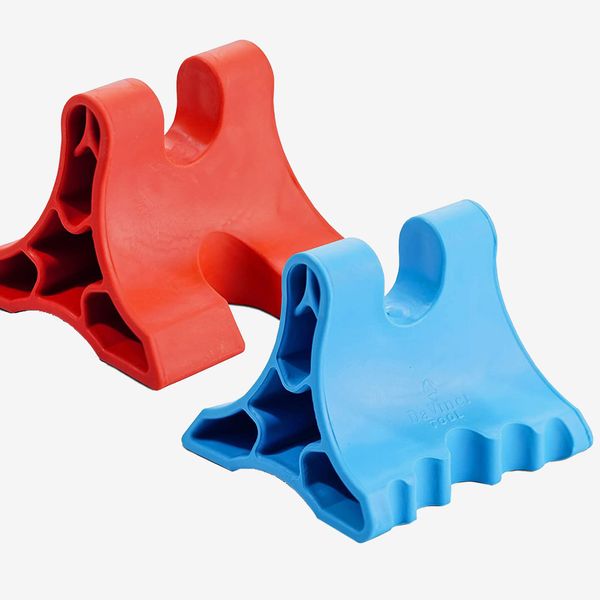
As a Pilates teacher, I am quite familiar with the various self-massage tools available to relieve muscle pain. From foam rollers to peanut balls to lacrosse balls to Theraguns and other gear, I’ve tried more than my fair share to soothe tension from head to toe. But after the pandemic hit — and I became glued to screens, less active, and way more tense than ever before — I realized that none of those massage tools delivered the intensity, deeper release, and muscle recovery I needed in a very specific area: my neck.
Foam rollers massage too broadly. Peanut and lacrosse balls roll away and only have one rounded surface to press against the body. Tools like a Craniocradle, while targeting the neck and suboccipital region, are really more for tension-headache than muscle relief. And I’d actually never put a Theragun (even a mini one) near my neck or skull because it’s too aggressive. It was while mulling over these imperfect options that I remembered another doodad my friend Trevor Strader, a classically trained and former opera singer, told me about a few years ago. Called the Davinci Tool, it is a massage instrument he used to release the back of his skull in order to free up his voice. Trevor heard about it from Broadway actress Analisa Leaming — they went to school together — and apparently Analisa heard about it from an actor turned massage therapist who specializes in vocal health and recommended the tool to her. This Davinci daisy chain suggested the thing is at least somewhat effective and, at a little more than $20, its price was reasonable enough to see for myself.
Here’s the first thing to know about the Davinci Tool: It’s intense. The first time I used it, the deep-tissue release I experienced felt so good that I ignored the directions to only lie on it for 30 seconds at a time and stayed on it for a whole episode of Rita. I was very sore the next day, but I decided to try again — this time following the directions. Those directions are simple: Place the tool at the base of your skull, breathe, and allow your body weight to relax onto it, even if it’s a tiny bit uncomfortable at first. Then rest on it for ten to 30 seconds. If you want deeper release, introduce tiny body movements or just try it again later in the day.
Other things to know about the tool include that it has three sides: One that’s rounded (gentle pressure), one that’s scalloped to feel like fingers (medium pressure), and one that’s pointed with a guillotine-like edge (deep pressure). It comes in “firm” (red) and “extra firm” (blue). Both versions cause initial discomfort — but, again, that’s because they’re actually achieving deep tissue release. And it’s not just for the neck: The tool has also helped me stave off shoulder-gripping tension headaches, release super-deep knots in my back, and loosen up my glutes and hips. (No matter where you put it — traps, hips, what have you — you would use the tool the same way.) A 10–15-minute session with the Davinci Tool can really change my entire body and mood; in fact, because it’s so compact, I now keep the thing on my desk so I can easily grab it whenever I need a break.
The Strategist is designed to surface the most useful, expert recommendations for things to buy across the vast e-commerce landscape. Some of our latest conquests include the best acne treatments, rolling luggage, pillows for side sleepers, natural anxiety remedies, and bath towels. We update links when possible, but note that deals can expire and all prices are subject to change.








